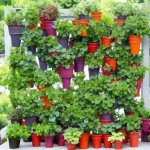Bread, an age-old staple of many diets around the globe, comes in all shapes, sizes, and textures. Among the most cherished types of bread is the traditional sourdough bread. Known for its tangy flavor, dense crumb, and crunchy exterior, sourdough bread is a delight to both prepare and consume. But let’s be real, the process can be a bit daunting for the uninitiated. Fear not, though! In this article, we’ll break down the steps and techniques needed to prepare a traditional sourdough bread with a crunchy exterior. Let us guide you on this delicious journey.
The Art of Sourdough Bread
Before we dive into the baking process, let’s explore the origin and unique characteristics of sourdough bread. The practice of making sourdough bread dates back thousands of years and was likely the first form of leavening available to bakers. What sets sourdough bread apart from other types of bread is its natural fermentation process.
Topic to read : What water sports and activities are a must ?
Creating a sourdough bread involves using a live fermented culture of flour and water, known as a "starter." This mixture ferments over time, producing natural yeasts and lactobacilli, which makes the bread rise and gives it its distinct sour flavor. The fermentation process also makes for a bread that’s easier to digest and loaded with beneficial bacteria.
Preparing the Sourdough Starter
The journey to a perfect loaf of sourdough bread begins with the preparation of the starter. Preparing a sourdough starter can take up to a week, but don’t let that deter you. The starter is a living entity that requires time to develop and mature.
In parallel : What Are the Best Strategies for Sports Teams to Navigate International Travel Restrictions?
The basic ingredients needed for a starter are flour and water. You mix equal parts of both in a jar and leave it to ferment at room temperature. Over the next few days, you’ll feed the starter with more flour and water. This process, known as refreshment, helps to propagate the wild yeasts and bacteria necessary for the bread’s fermentation. If cared for properly, a good starter can last for years and even decades.
Crafting the Dough
Once your starter is ready, it’s time to create your dough. The ingredients for the dough are quite simple: sourdough starter, flour, water, and salt. The magic lies in the process.
You’ll begin by mixing the starter, water, and flour. Once combined, allow the mixture to rest for about 20-30 minutes, a process known as autolyse. This rest period helps the flour to fully hydrate and starts the fermentation process. After the autolyse, you’ll add the salt.
The next step in the process is bulk fermentation. This is where the dough will rise and develop its flavor. The dough is folded several times during the bulk fermentation process to build strength and help it rise.
Shaping and Baking the Bread
Once your dough has risen and is full of bubbles, it’s time to shape it. Shaping the dough further strengthens it and gives the loaf its final form.
After shaping, the dough goes through a final proofing stage. This is the last rise before baking and is crucial to achieving a well-risen loaf. Depending on your preference and conditions, the final proof can be done at room temperature or in the fridge for a longer, slower fermentation.
Finally, the moment of truth – baking. Baking your sourdough bread in a hot oven is what gives it that delightful crunchy exterior. To achieve this, you’ll need to create steam in your oven. This can be done by using a dutch oven or baking stone and throwing in some ice cubes or spritzing water into the oven at the start of the bake.
Perfecting Your Sourdough Bread
As you might have gathered by now, making sourdough bread is as much an art as it is a science. It involves understanding the behavior of your starter, the feel of your dough, and your baking environment.
Each step of the process contributes to the final product, from the tangy flavor and dense crumb to the coveted crunchy exterior. With practice and patience, you will unlock the key to your perfect loaf of sourdough bread.
Remember, it’s okay if your first few loaves don’t turn out perfect. Each bake is a learning experience. Take notes, make adjustments, and most importantly, enjoy the process! After all, there’s something incredibly rewarding about baking your own bread from scratch.
The Science Behind the Crunch
The crunchy exterior of a well-made sourdough bread is not a random occurrence. It is the result of a perfect balance of temperature, moisture, and baking time. Let’s dig deeper into the science behind the crunch.
The moisture within the dough creates steam during baking. This steam gets trapped within the bread, making the inside soft. Meanwhile, the heat of the oven drives moisture from the outer layer of the dough, creating a hard, crispy crust. The trick to this is getting your oven hot enough to quickly convert the dough’s surface moisture into steam. A minimum of 450 degrees Fahrenheit (232 degrees Celsius) is typically recommended for baking sourdough.
The use of a Dutch oven or baking stone can help to create a moist environment inside the oven. By containing the steam from the bread, these tools help to improve the crust’s texture and color. Alternatively, you can create steam by placing a tray with boiling water at the bottom of the oven or spritzing water into the oven at the start of the bake.
It’s also important to note that the type of flour used can affect the crust’s texture. Higher protein flours tend to create a crunchier crust due to their higher gluten content. So, if you’re after that perfect crunchy exterior, consider opting for a bread flour or high-protein all-purpose flour.
Conclusion: The Joy of Sourdough Bread Making
There’s no denying that making sourdough bread is a labor of love. From nurturing your starter to patiently waiting for the dough to ferment and rise, each step requires care and attention. But as anyone who’s ever tasted a slice of freshly baked sourdough can attest, the result is well worth the effort.
The joy of sourdough bread making is not only in the baking, but also in the learning. Each bake is a new opportunity to refine your techniques, experiment with different flours, or adjust your fermentation times. And with each successful bake, you’ll find yourself more attuned to the subtle nuances that make sourdough bread so special.
Remember, the goal is not just to bake bread—it’s to connect with an age-old tradition, to understand the science behind the art, and to create something delicious that you can share with others. So embrace the journey, and before you know it, you’ll be crafting loaves with that perfect crunchy exterior that are not only a treat to your taste buds, but also a testament to your dedication and skill.
So go ahead, roll up your sleeves and dive into the world of sourdough bread making. Trust the process, learn from your mistakes, and most importantly, have fun. Because when it comes to making sourdough bread, the journey is just as rewarding as the destination.












